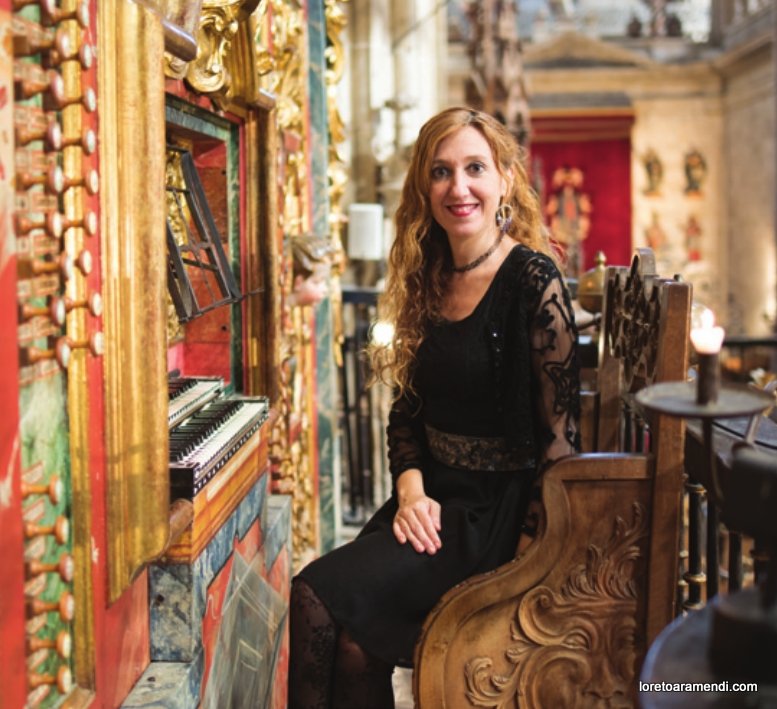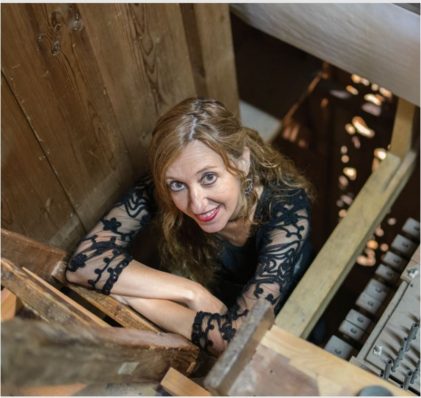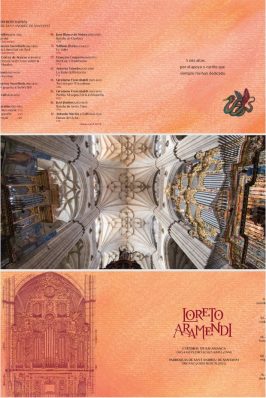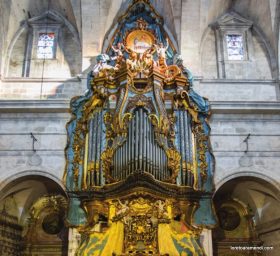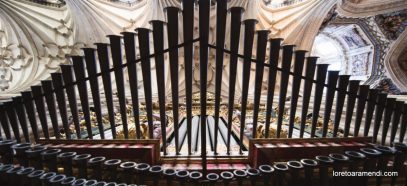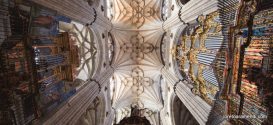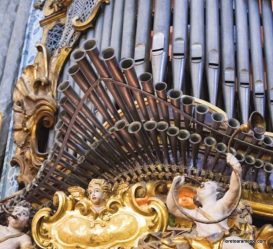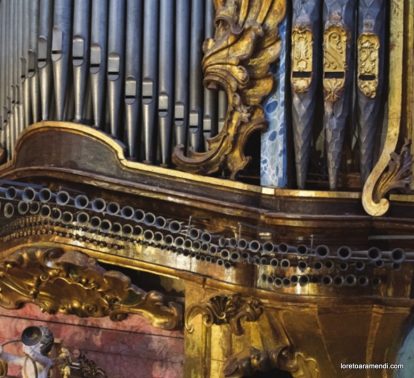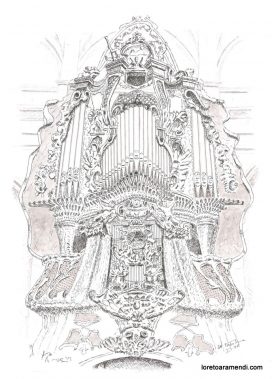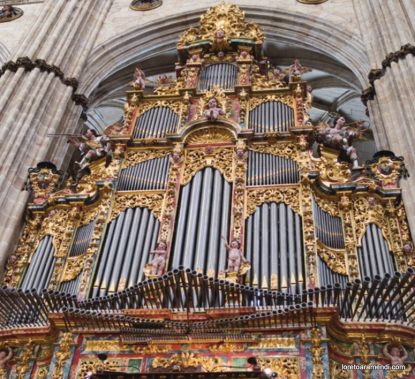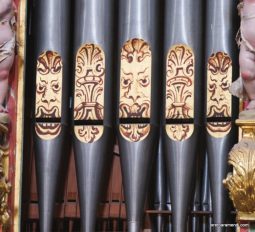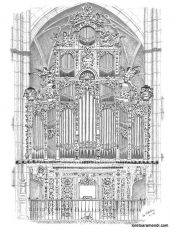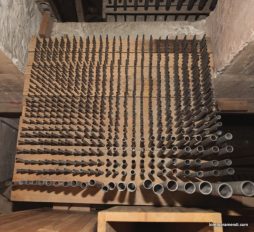“Orlos, Clarines y otros Nazardos”. Loreto Aramendi plays Baroque music at the Pedro Echevarría organ (1744) of the Salamanca Cathedral and at the Jordi Bosch Organ (1765) of the Sant Andreu de Santanyí Parish.
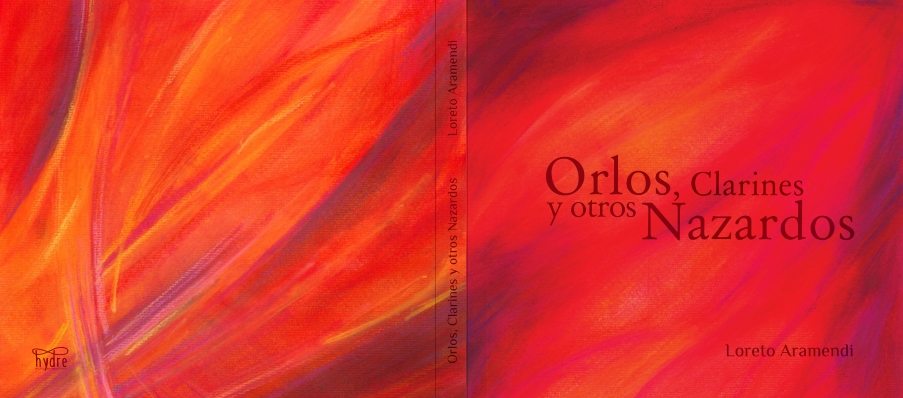
Orlos, Clarines y otros Nazardos – CD Loreto Aramendi
Loreto Aramendi hat ein glückliches Händchen bei der Repertoireauswahl und zwei glückliche bzw. erfolgreiche Hände bei der Interpretation ihres breitgefächerten Doppelprogramms. Schaut man sich das genauer an und hört genau hin, dann ist der Sinn erkennbar: Die Werkauswahl zeigt die beiden Instrumente mit ihren vielseitigen klanglichen und spieltechnischen Möglichkeiten, was weit über die authentische Darstellung der üblichen spanischen Verdächtigen (Cabézon, Correa de Arauxo u. a.) hinausgeht. Das ist ein wohltuender Blick über kulturelle Grenzen hinaus mit einem Fokus auf das, was musikalisch verbindet und sich angemessen und natürlich umsetzen lässt.
__Crítica de Johannes Ring en Die Organ journal del mes de diciembre 2020.
What a delight this is! I’ll get on to the performances in a moment, but I have never seen so sumptuous a CD package.[…] outstandingly engaging performer […] I just cannot put into words the glory of the sound […] performances are always superlatively musical, and dramatic. […] recording techniques are exemplary […] the total production value is excellent. This is, to my mind, a must have!
__ Review by David Dewar en Choir & Organ – December 2020.
Bet won by Loreto Aramendi, an excellent musician who knows how to convince us with a precise and fluid game, in harmony with the climates of the various works. It makes us listen to many cleverly dosed mixes of sounds.
These ancient instruments reveal unsuspected resources under the expert fingers of Loreto Aramendi.
An album to discover with greed and that, listened to with headphones, will not leave you unscathed!
__ Review by en ResMusica – May 2020.
[…] the 20th century German repertoire (Distler) sounds excellent under the hands of Aramendi. […] virulent and imaginative organ performance, […] Spectacular effect […]
Versatility is at the same time the attractive part of this production, which shows that the Spanish organs not only have to play Spanish music.
__ Review by en Trouw – June 2020.
Double CD price (Spain – freight included) : 20 €
Descripción
- Double CD (2h07) recorded in October 2019. Release date: April 2020
- 99 page book.
- Notes to the program.
- Technical description of the organs.
- Organ photos.
- Texts in: Castellano / Euskera / Français / English / Deutsch.
- Shipping by post.
PEDRO ECHEVARRÍA (1744) PIPE ORGAN
SALAMANCA CATHEDRAL Dietrich Buxtehude (1637-1707)
1 – Preludio BuxWV 163 7’34”Girolamo Frescobaldi (1583-1643)
2 – Canzone dopo l’Epistola 2’45”Georg Muffat (1653-1704)
3 – Tocata prima, Apparatus musico-organisticus 5’29”
Francisco Correa de Arauxo (1584-1654)
4 – Segundo tiento de quarto tono 4’23”
Pablo Bruna (1611-1679)
5 – Tiento de 2 tono por G sol re ut sobre la letanía de la Virgen 6’38”
Juán Cabanilles (1644-1712)
6 – Corrente italiana 6’38”
Padre José Larrañaga (1728-1806)
7 – Sonata en Do M 3’21”
Luis de Narváez (1490-1547)
8 – Quatro diferencias sobre “Guárdame las vacas” 1’38”
Johann Pachelbel (1653-1706)
9 – Allein Gott in der Hoh’ sei Ehr 3’15”
Francisco Correa de Arauxo (1584-1654)
10 – Tiento de Quinto tono 4’57”
Hugo Distler (1908-1942)
11 – Thirty Pieces Op. 18/1 (extracto de 5 piezas) 6’30”
Maria Josefa Marco
12 – Fandango 1’49”
Michel Corrette (1707-1795)
13 – Où s’en vont ces gays bergers 4’12”
14 – Tambourins 1’50”
15 – À la venue de Noël 2’32”
Nicolas de Grigny (1671-1703)
16 – Dialogue 3’30”
17 – Plein Jeu 1’17”
José Jiménez (1601 -1672)
19 – Batalla de sexto tono 5’27”
JORDI BOSCH (1765) PIPE ORGAN
PARISH OF SANT ANDREU DE SANTANYÍ Juán Cabanilles (1644 -1712)
1 – Batalla Imperial 4’52” – órgano Salamanca Jan Pieterszoon Sweelinck (1562-1621)
2 – Mein junges Leben hat ein End 6’24” – órgano Salamanca Francisco Correa de Arauxo (1584-1654)
3 – Tiento tercero de sexto tono sobre la Batalla de Morales 6’51”
John Dowland (1563-1626)
4 – Pavana Lachrymae 6’24”
Jan Pieterszoon Sweelinck (1562-1621)
5 – Balletto del granduca SwWV319 4’28”
Henry Purcell (1659-1695)
6 – Ground 3’01”
Michel Corrette (1707-1795)
7 – Joseph est bien marié 2’35”
8 – Une jeune pucelle 3’44”
9 – Noël provençal 1’20”
José Blasco de Nebra (1702-1768)
10 – Batalla de Clarines 2’44”
William Byrd (1543-1623)
11 – La Volta 1’30”
François Couperin (1668-1733)
12 – Récit de Chromhorne 2’53”
Antonio Valente (1520-1580)
13 – Lo Ballo dell’Intorcia 1’31”
Girolamo Frescobaldi (1583-1643)
14 – Toccata per l’Elevatione 3’06”
Girolamo Frescobaldi (1583-1643)
15 – Partita XI sopra l’Aria di Monicha 8’20”
José Jiménez (1601-1672)
16 – Batalla de Sexto Tono 4’56”
Antonio Martín y Coll (1650-1734)
17 – Danza del Acha 1’40”
